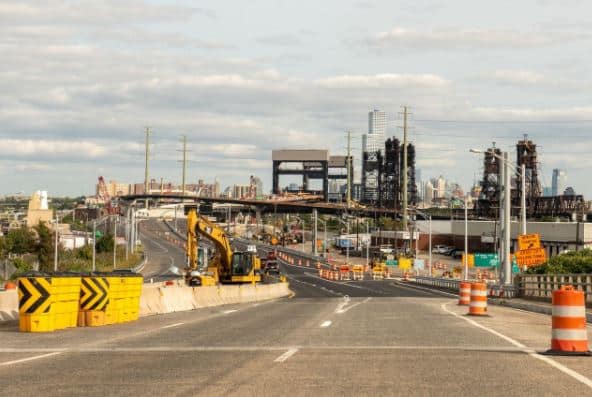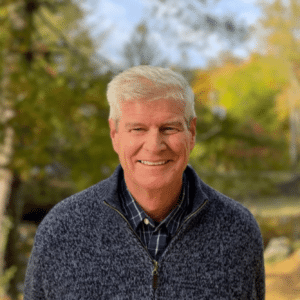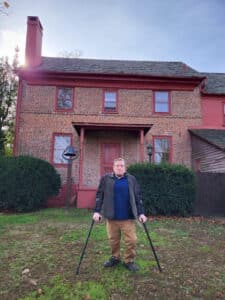Last month, a horrific incident involving a bike rider took place in Kearny on Route 7 near Fish House Road. Thirty-two year-old Nour Boules, a GrubHub employee, was making a delivery run on a Friday evening when he was struck by an automobile. The rider lost his life. The driver faces no charges.
The influx of essential workers taking to the streets on bikes has increased notably since the COVID-19 pandemic occurred. This scenario magnifies the dangers faced by urban bike riders. In New York City, a disturbing trend of fatalities and injuries has caused outrage among advocates for safer active transportation. Roadways in New Jersey’s urban and suburban areas can also be particularly dangerous. Both traffic and treacherous roadway designs lead to tragic events, avoidable crashes in which the vulnerable rider meets the most severe of consequences while the driver, protected by a vehicle, remains unscathed.
It’s important to note the extreme danger of riding the route Boules was taking on his return trip from Kearny back to Jersey City. Apparently, a malfunction with the navigation he was using caused him to be directed onto Route 7. That particular stretch of highway is four lanes, divided, with exit and entrance ramps on both the right and left sides of the road. Anyone who’s driven it would likely agree that segment of roadway is among the most undesirable and dangerous thoroughfares in all of New Jersey. The thought of traveling it on a bike is almost unimaginable.
It could be said that New Jersey’s transportation network is defined by its chaotic madness. For drivers, it’s an aggravating annoyance. But for bike riders, it means risking their lives every time they take to the streets. The COVID-19 pandemic has increased the demand for intercity bike trips and the option to commute by bicycle has become increasingly utilized by a variety of people. Particularly, delivery people on bicycles have seen an increase in demand for their services in the COVID-19 era, highlighting that safe cycling infrastructure is not just a nice-to-have amenity – it’s a necessity for increasingly more people as a means of mobility. As a result, the most vulnerable users on our roadways need more options. For instance, in places such as Denmark and Germany, bicycle superhighways are allowing riders to cover longer distances without the need to worry about the dangers of sharing the right-of-way with automobiles.
In North Jersey, the proposed Essex-Hudson Greenway would provide riders with their own version of a bicycle highway. The EHG, a project many years in the making, is a linear park spanning over 9 miles, containing its own dedicated right-of-way that will connect the municipalities of Jersey City, Secaucus, Kearny, Newark, Belleville, Bloomfield, and Montclair. When constructed, it will give riders the option of bypassing some of the region’s most dangerously difficult roadways. Advocates are gathering support across the region in order to move this project forward. The next step will require the two counties to agree to take over ownership and development. You can show your support by sending a letter to county officials at www.essexhudsongreenway.org/support.
There’s far more at stake though, than simply ensuring safe passage for riders travelling between towns and cities. Bicyclists need safe routes within the city borders as well. A significant amount of bike trips take place within the boundaries of a municipality. Fortunately, this is where sound planning and policy approaches can have an impact that will save lives.
A complete streets approach needs to be established and implemented as the foundation for safer roads in our towns and cities. “Complete streets” is a method to roadway design that takes the safety and efficiency of all users into account, not just drivers of automobiles. The future of mobility will focus on the movement of people – not just cars. With a complete streets focus on transportation equity, people come first and every user matters. Too often, the convenience of motorists are prioritized, to the danger and detriment of bike riders and pedestrians. Under a complete streets plan, vulnerable road users are given facilities and infrastructure necessary to ensure the safer use of shared rights-of-way. For essential employees such as delivery people, who make frequent trips each day, roadways that address the needs of bicyclists will help prevent injuries and fatalities among this important group of workers.
For bike riders, it’s also crucial to implement options for safe riding with a network approach i.e. create connected networks of bike routes. A beautiful protected bike lane along a main boulevard is a wonderful thing, but what happens when a bike rider turns onto a connecting street that lacks any protective characteristics? What about places where a bike lane just comes to an abrupt end? Too often, a bike route disperses riders from a safe space into danger zones. We need to think of bicycle infrastructure not just in terms of placemaking, but also along the lines of making safe trips from Point A to Point B. Again, this directs us toward the need for people-oriented planning.
It’s essential that decision makers are reminded that it’s people who take the many trips throughout and across our cities and that the movement facilitated by road design has a purpose. A roadway isn’t merely a conduit, it’s a tapestry of many journeys. Will they be safe or treacherous? Too many people are subjected to unnecessary danger over the course of these multitudes of trips. Whether they are delivery workers performing essential tasks, children riding between home and school, or members of our communities who have no other option but to take to the streets by bike or foot, all users of our thoroughfares deserve to be safe from unnecessary peril caused by unconscionably poor street design.
Reducing these harm factors takes sound planning. Municipalities and counties would be well-served, as a starting place, to create a Bicycle and Pedestrian Master Plan for their jurisdictions. It should identify needs, define essential routes for bike and pedestrian travel, and aim to facilitate the creation of safe transportation networks for vulnerable roadway users; but the needs of cyclists and pedestrians should not be confined to one plan. This people-centered approach should span all city plans and policies that work together towards the common goal of creating safe and livable cities for people.
We owe it to the memory of Nour Boules, and in support of vulnerable bike riders that include delivery people, essential workers and bike commuters, to push forward with projects such as the Essex-Hudson Greenway throughout New Jersey. And we also owe it to his memory, and the memories of the many other victims of the violence inflicted on them by dangerous roads, to create complete streets that provide safe spaces for vulnerable users. Organizations across our state have done outstanding work getting bike trails for recreational use built; now we need to take these efforts to the next level to legitimize cycling as a mode of transportation. It’s time to identify areas that can be well-served by “bike highways,” dedicated rights-of-way that will connect towns, cities, and communities in a manner that completely protects bicyclists from the dangers of vehicular traffic. And it’s time to have the vision to reimagine our existing roads in a complete streets method that ensures a safer experience for every person who uses them. By doing these things, we can meet the demand to create safe routes for the riders who need them the most. News headlines about riders and walkers victimized by roadway crashes should be a thing of the past. Let’s build safer routes to a better future.
Aaron Hyndman, Former Communications Coordinator, NJBWC















































































